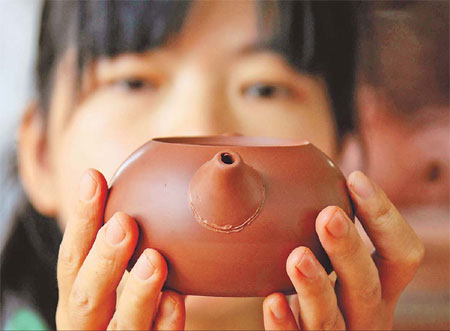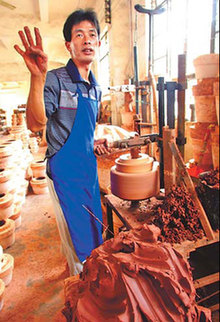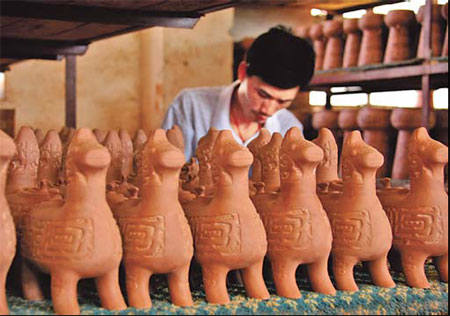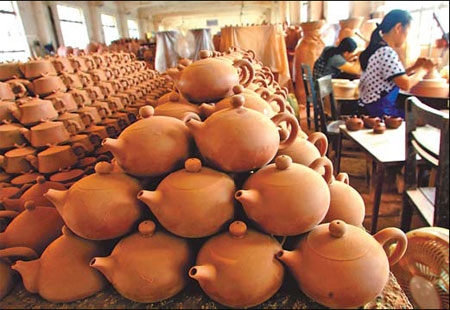Society
Earth, glaze and fire
By Huo Yan (China Daily)
Updated: 2010-10-06 09:37
 |
Large Medium Small |
At the Guangxi Pavilion of the Shanghai Expo, some 20 refined pottery works have caught the attention of visitors. They are even more surprised upon hearing that the Nixing pottery of Qinzhou, Guangxi Zhuang autonomous region, had won the first international prize for Chinese pottery at the 1915 World Expo, in San Francisco, the United States.
 Nixing tea pots and other daily utensils not only look good, but are also acid- and alkali-resistant. They are ideal for preserving food and preparing tea. [Photo/China Daily] |
With a history of over 1,300 years, Nixing pottery is one of four most famous categories of pottery in the country.
Nixing pottery reached its peak during the Ming and Qing (1368-1911) dynasties, when visiting businessmen and officials bought pieces as gifts for friends.
 Many potters at Qinzhou, Guangxi Zhuang autonomous region, carry on their family tradition of making Nixing pottery. [Photo/China Daily] |
The clay comes from two sources. The clay from the western bank of the Qinjiang River gives the pottery hardness; while the softer and stickier clay from the eastern bank makes the pottery compact and smooth, Luo says.
After countless experiments, ancient potters found the ideal way to make the pottery both hard and compact in texture, and smooth looking.
Nixing pottery pieces comprise daily utensils and artworks. Daily utensils, usually produced in volume, include those used in tea making and drinking, cooking utensils, flowerpots and the like. Art ware is highly prized and rare items feature the mysterious fambe glaze, an accidental coloring, unique to Nixing pottery, Luo says.
Known as "the art of earth and fire", the fambe colors come from random chemical reactions in the kiln and do not use pigments.
With polishing, the pieces will shine with gorgeous colors such as sky blue, bronze, black green and purplish red.
Getting fambe colors used to be called "hunting treasure in the fire", as traditionally fambe pieces were extremely rare, almost 1 in 1,000.
In 2003, the local government organized technicians to understand the secrets of fambe. After two years of work, researchers were able to raise the rate of production of good quality items to above 90 percent, and that of fambe pieces to 60 percent.
Nixing pottery not only looks good, it is also acid- and alkali-resistant. More importantly, it allows air to permeate but keeps water and vapors in, which makes it ideal for food preservation and preparing tea.
Many students work as interns at the pottery workshops in Qinzhou, learning from technicians and veteran potters.
For Yuan Yunxin, 42, and his son Yuan Feiwen, 21, making pottery has meant much more than a livelihood for generations of his family.
Yuan Feiwen says he learned pottery from his grandfather after graduating from high school. It took him four years to manage all the crafting skills.
"I feel obliged to inherit this family tradition," he says. "But most importantly, I love my job, because I truly enjoy seeing heaps of clay turning into fine craftworks in my own hands."
At another workshop, a craftsman surnamed Li is engraving words on a brush holder.
The engraving procedure demands great skill and patience; a small error would ruin the entire piece because you can never redo it, says Li before plunging into his work again.
 Nixing pottery from Guangxi Zhuang autonomous region dates back 1,300 years. [Photo/China Daily] |
 Clay teapots are ready to be sent to the kiln for firing. [Photo/China Daily] |